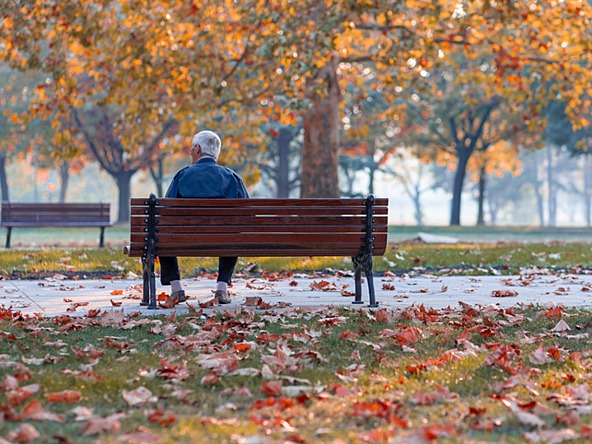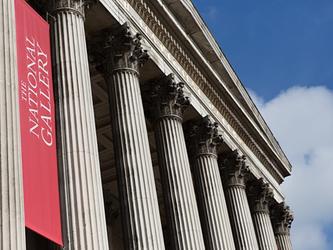Building a brighter, more inclusive future

The disruption of the past few years has reshaped society, our behaviours and our values. We’ve seen movements such as Black Lives Matter (BLM) spark a rethink around equality and representation, as brands and individuals reflect on their own unconscious bias.
The BLM movement came at a time when Covid-19 was exposing inequalities such as deprivation, low income, and poor housing – factors that interconnect with, and disproportionately affected people depending on their race, gender, geography, age, and ability.
This was shortly followed by huge price hikes as the cost of living skyrocketed, adding new layers of instability to our futures.
Feelings of isolation within minorities post-pandemic
Mindshare UK’s ‘All Together Now’ study, in partnership with Diversity Standards Collective, found that minority groups are still struggling to reconnect with society, and for some in the LGBTQIA+ community, isolation brought about by the pandemic has proved problematic. More than half ( 54%) of this group feel their worlds have shrunk so much they don’t know what to do with themselves and just under half ( 47%) feel like they have lost touch with who they once were.
This sense of isolation has also been a challenge for people with disabilities, with six in 10 agreeing they are in survival mode for much of the time. This group was the most likely to be finding it hard to feel positive around the future, expressing concern that life will never get back to where it used to be.
Cost of living intensifying a sense of exclusion
The pandemic has also deepened existing wealth inequalities, with many now worried about affording essentials such as food and heating. In fact, only 15% of the total population are confident they will be able to get through with little to no change to their lifestyle.
For physically disabled groups the problem of rising living costs is particularly acute, with 77% concerned about rising energy prices (vs 62% average UK adult) and 58% concerned about having enough money to pay bills (vs 46% average UK adult).
The study also found an increased likelihood of reliance on loans, deferred payments, second jobs or increased overtime as strategies to cope with the impact of the crisis, especially among black and South Asian communities, who often have lower levels of financial resilience compared to the rest of the population.
For example, 62% of people of South Asian heritage were predicting that they may need to borrow money/take out a loan to cope financially, compared with a UK adult average of 40%. Additionally, 80% of South Asian workers were considering ways in which they could get another job or work more overtime, compared with 67% of average UK workers.
Inclusion in media and advertising
Being cut off from our loved ones, our friends and our communities has led to rising levels of isolation for many, and media and technology has helped offset this through keeping us entertained and connected during our lowest moments.
While social media has a negative side, at times portraying an unrealistic representation of real life, it has also enhanced the lives of minority groups in different ways. Particularly for LGBTQIA+, social platforms have allowed individuals to find and connect with communities beyond geographical boundaries – providing support, reassurance, and shared values.
When it comes to media and advertising, people are still eager to see more diversity, the study found. This is especially true among minority groups, but there is growing evidence of increased brand loyalty, purchase intent and effectiveness when a brand gets this right. It doesn’t necessarily need to be about seeing yourself reflected – but if there is no diverse representation, this is where the issue lies.
The effort from some brands and businesses is not going unnoticed though, as people are seeing an improvement when it comes to ethnic representation. However, many still believe there’s a long way to go and brands must be careful as representation can sometimes feel “tokenistic”. Although the motive is often genuine, people are now warier than ever and questioning whether brands are simply trying to fill a diversity “quota” or latch on to a diversity movement. Inclusion isn’t simply about image – people are increasingly wanting the realities of their lives reflected in advertising. Brand messaging that truly reflects the world and life – transcending difference and celebrating culture – will ultimately resonate most strongly.
It’s easy for brands to lose touch with their customers in a rapidly changing world that seems to be constantly presenting people with new challenges. For brands hoping to retain loyalty and actively participate in the effort to alleviate pressure during hard times, they must keep their ear to the ground and be prepared to act quickly.
To continue to win over consumers and survive in the current climate, brands must ensure they’re constantly looking for other solutions outside of simply reducing prices – such as rewarding loyalty, sustainability efforts and greater transparency – to build stronger, long-lasting relationships with people and help see them through the difficult times ahead.
Julia Ayling is head of insights at Mindshare UK
Methodology: A 20-minute survey with a nationally representative sample of 3,000 respondents, fieldwork conducted 28th March to 4th April 2022. Research was supplemented with six one-hour-long community workshops co-hosted with The Diversity Standards Collective. Community workshops were hosted with the following audiences: South Asian, East Asian, Black, African & Caribbean, LGBTQIA+, people living with a disability, and lower income households.

We hope you enjoyed this article.
Research Live is published by MRS.
The Market Research Society (MRS) exists to promote and protect the research sector, showcasing how research delivers impact for businesses and government.
Members of MRS enjoy many benefits including tailoured policy guidance, discounts on training and conferences, and access to member-only content.
For example, there's an archive of winning case studies from over a decade of MRS Awards.
Find out more about the benefits of joining MRS here.













1 Comment
Dr. Stephen Needel
3 years ago
Conjoining the Black Lives Matter movement with either COVID-19 or the LGBTQ+ movement would be a mistake in timelines - the BLM preceded these by a good 6 years (Trayvon Martin and expanded with Michael Brown killings). Minority groups have always had a problem connecting with society - it's partly why we call them minorities - they are outside the societal norm. That doesn't mean it's a good thing, but it is definitional. Great points about advertising and tokenism - we are seeing a lot of that here in the US, where racially mixed households are everywhere on TV, despite their scarcity in the actual population.
Like Reply Report